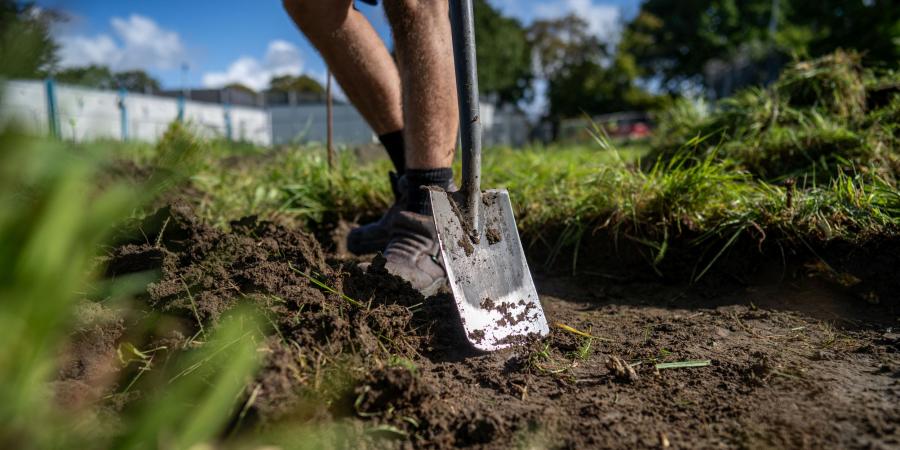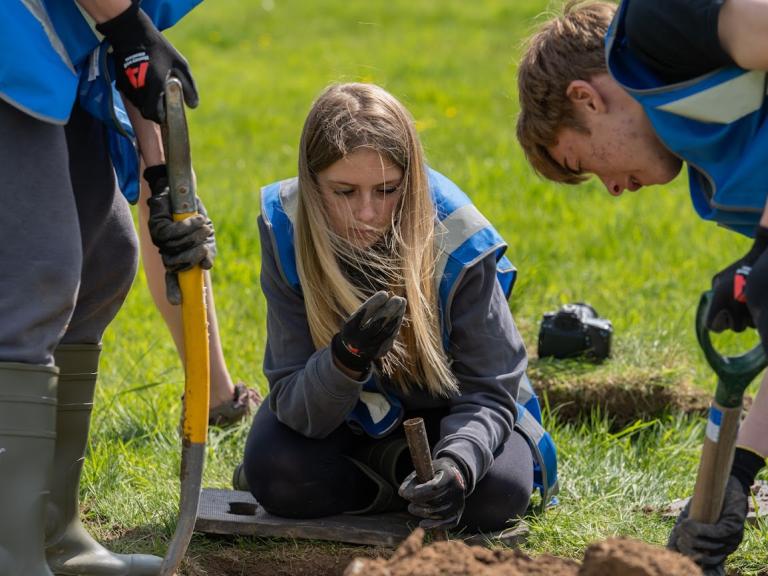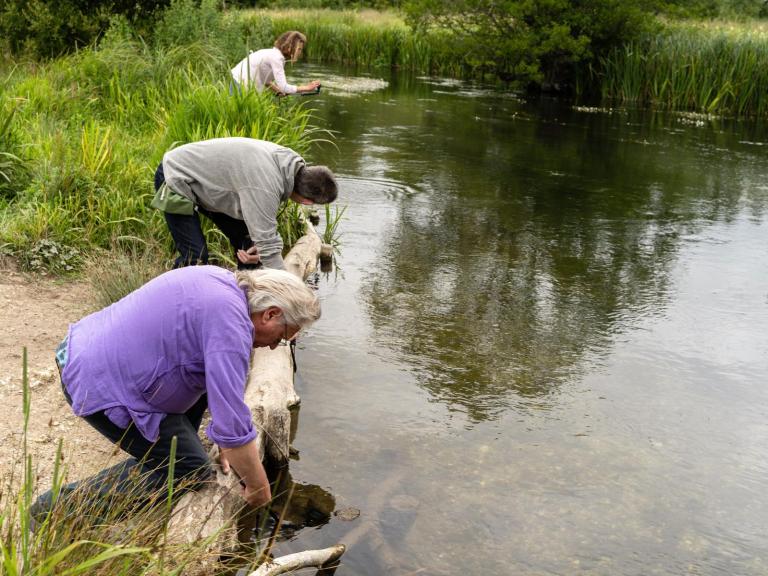51.282635342534, -2.0421051979065
Project summary
- Funder: National Lottery Heritage Fund
- Project duration: June 2023 – May 2024
- Location: HMP Erlestoke, Wiltshire
- Sector: Public Sector
Services provided
- Heritage inclusion and wellbeing
- Community and engagement
Key facts
- The project received 116k from the National Lottery Heritage Fund and 10k match funding from both the prison itself and Wessex Archaeology.
- Independent evaluation took place throughout to understand the impact on wellbeing and, in May 2024, an exhibition curated by the men was held at the prison.
In 1963 a small-scale archaeological excavation took place on the site of HMP Erlestoke in Wiltshire when it was a different institution. During this dig, items dating back to the Bronze Age were found. Sixty years on, a team from Wessex Archaeology collaborated with the prison to undertake an archaeological project with a difference. Designed to explore the impact of archaeology and heritage on the wellbeing of the men from the category C HMP Erlestoke prison. The men were given agency to contribute at every stage of the archaeology programme.
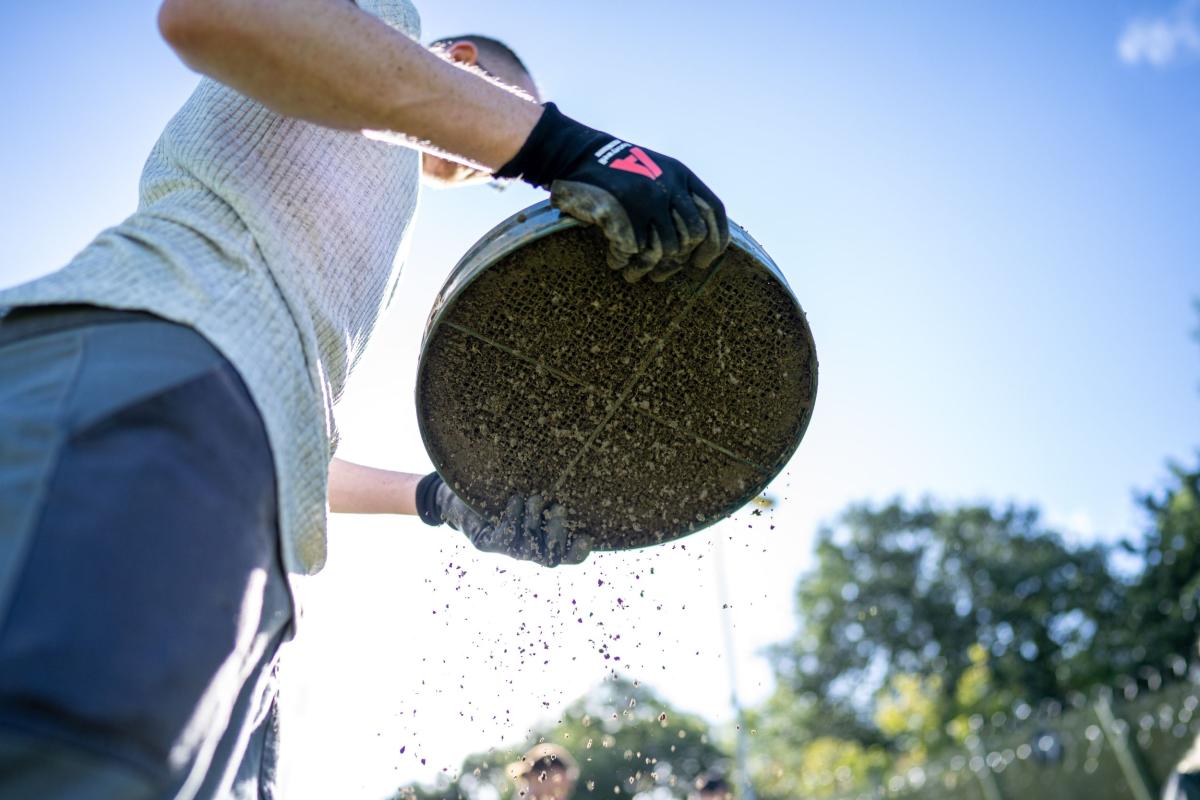
An enriching learning experience
This project was co-designed with the prison community. The archaeological findings were not the focus, instead, it aimed to give the men an opportunity to experience an archaeology project and learn skills. It was organised around a series of learning aims, such as how to research, interpret data, work as a team, communicate, record information, and report.
The practical nature of the project and the purposeful focus on their sense of ownership over proceedings were extremely engaging for the men who participated. They were involved from the outset, from mapping out the site with our Geophysics team to digging test pits, through to writing up reports on finds and communicating the findings. During excavations, the men discovered a range of artefacts, which sparked excitement and emotional connections with the men.
“It has been really interesting learning about the different artefacts and the processes around finding them. When I was taking part in the actual dig, it really felt like a treasure hunt, and the more items we uncovered, the more we wanted to dig for more.”
HMP Erlestoke’s Education Manager worked alongside Wessex Archaeology staff to accommodate the wider prison community’s appetite for archaeology, integrating the project into maths, horticultural courses, and art and poetry workshops. Staff at HMP Erlestoke reported requests for more archaeology books in the library, and a palpable sense of excitement and eagerness to learn was felt across the prison community.
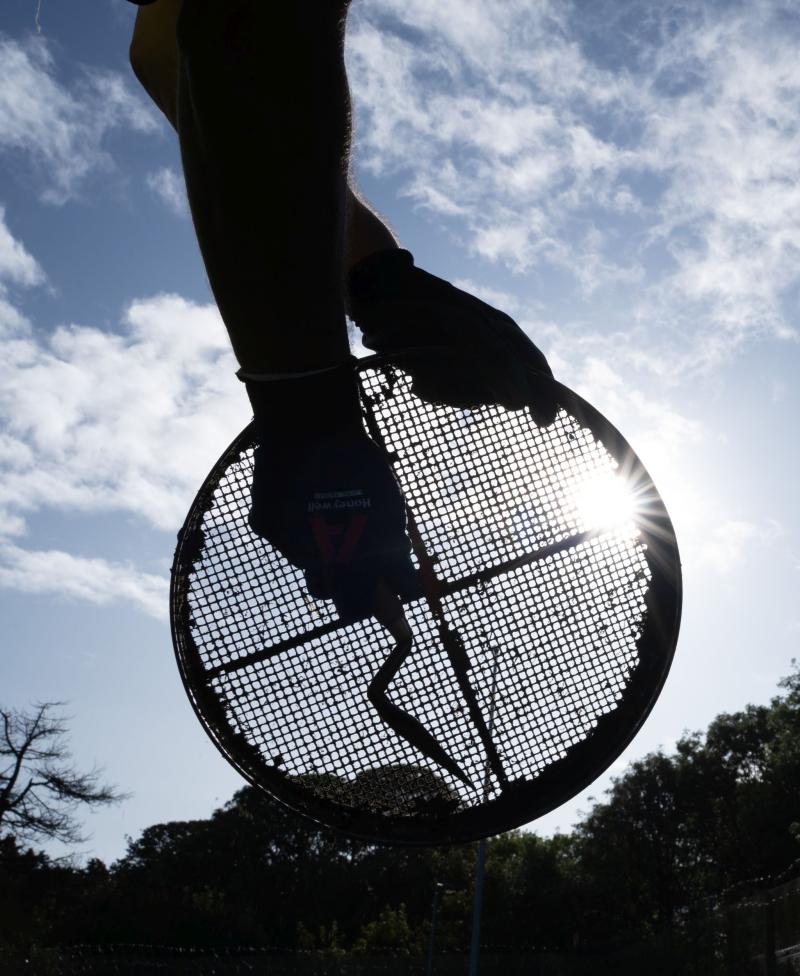
Building confidence and a sense of ownership
A sense of ownership, empowerment and co-creation were essential to the project. Our staff ensured the men were treated like active and vital team members at every stage. They were involved in all aspects of the archaeological project: research, risk assessments, Ground Penetrating Radar surveys, sieving, finds identification, finds processing and drawing, and test pitting over four weeks. By the end of the dig, the men were confident in marking out and carefully digging test pits, able to use tools properly, recognise changes in stratigraphy, record plans of the test pits and carry out initial identification of finds.
After working with our finds specialists to process and record the finds, our flint expert visited the site several times to discuss the significance of the flints they had diligently spotted whilst sieving. The men were responsible for producing the post-excavation report to add their findings to the Mesolithic archaeological record of the area.
To expand the project to a wider group of men, there were regular talks and workshops on other areas of specialism, including LIDAR, marine archaeology and geoarchaeology. This meant that those not able to take part in the dig for security reasons could still get involved. Many of the sessions were filmed so that they could be shared on the prison’s intranet, so more men could access them, and another resource was created.
Ecological habitat sessions enabled the men to find out more about the nature in the area, and the visiting ecologists were very impressed by the variety of plants in the prison gardens. As part of these sessions, the men made bird and bat boxes to go up around the site.
One participant assumed responsibility for internal communications for the project, conducting interviews and podcasts with participants that were made available to the wider prison community.
Inspired by a series of workshops with one of our Finds Illustrators and the art teacher at HMP Erlestoke, the men created artworks of the flints found during the dig. From initially drawing the artefacts to illustrate every facet and fracture, the men's creativity was captured in abstract paintings on canvas for others to experience in an exhibition curated by the men that concluded the project in May 2024.
Impact on the participants
The role of a prison in rehabilitation is not just about qualifications; it is about helping prisoners to gain softer skills so they are equipped, as far as possible, to be valued members of society and gain employment, and this project supported that. The range of opportunities on offer was central, allowing the men to find something they connected with and to develop their skills.
This was felt across the wider prisoner community, from using the data from the dig in maths lessons, integrating the test pit stratigraphy in horticultural courses, using the artefacts to inspire art lessons and engaging the carpentry team to craft a bespoke cabinet for a collection of the finds to be displayed in.
Several men expressed interest in archaeology apprenticeships, and one member of the team has kept in contact with Wessex Archaeology since his release, regularly enquiring about opportunities.
“I’m just a bit mad I didn’t get into it years ago, it would have definitely got me off the street and kept me on the straight and narrow.”
In terms of health and wellbeing, the participants discussed their relief at being treated as individuals, not prisoners, by Wessex Archaeology staff:
“Rubbing shoulders with professionals and they treat you with respect – that has improved my confidence, to have good conversations with them, not something I would usually do.”
The men also enjoyed having something new to talk about with their families and friends on the outside and with other men in the prison setting. The value of this, in terms of providing a positive focus for conversations and thereby potentially enhancing social networks, is a distinctive aspect of projects within a prison environment.
The dig itself, the excitement of the finds and being outdoors were a key part of the men’s well-being and the success of the project from their perspective.
Time and again, the men involved expressed that this project brought about positive change in them and their sense of self-worth and potential.
“I have been in and out of prison since the age of 13 said this was the first time I have actually learnt anything.”
This project sought to include a vulnerable portion of society in archaeological activity that was completely different to anything they had experienced before and, in doing so, enhance their wellbeing and self-esteem. In partnership with HMP Erlestoke, the project had a strong rehabilitative aspect designed to engage participants through a range of educational activities and raise their expectations for the future.
